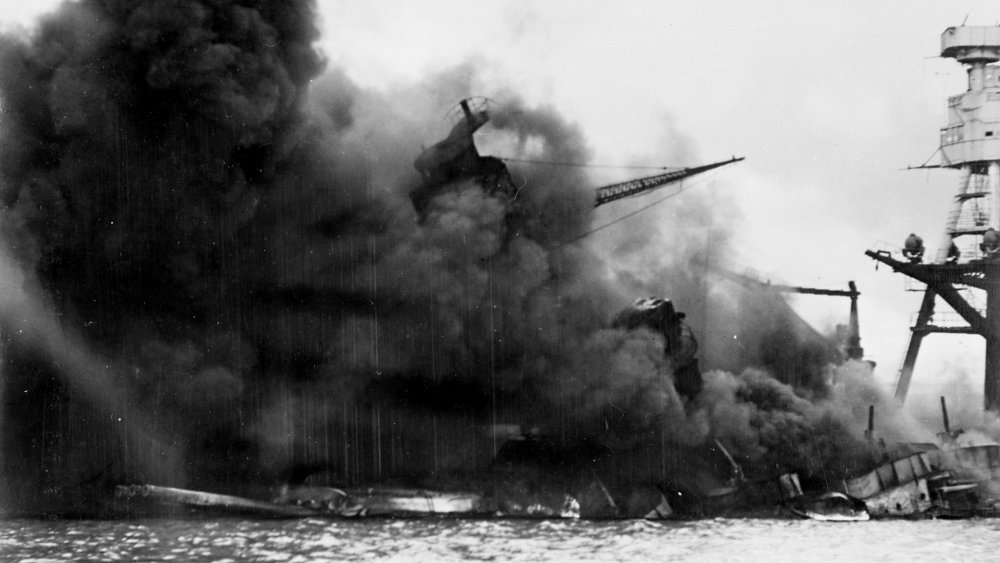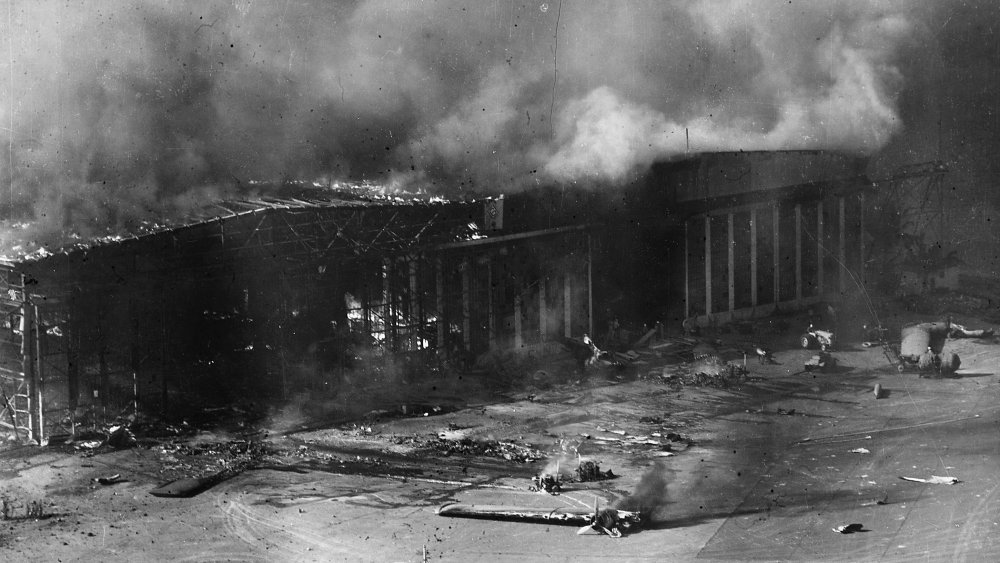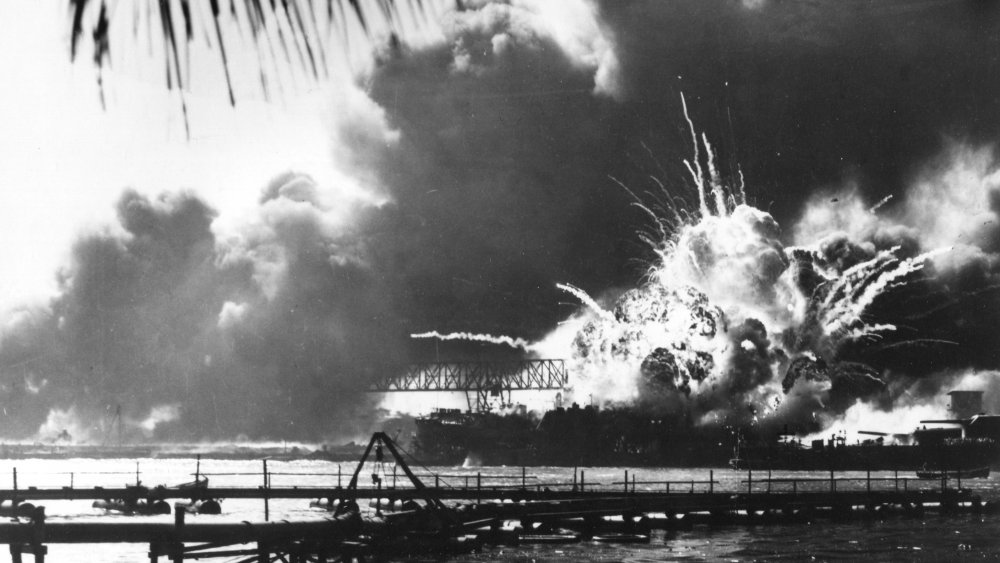This Is How An Advertisement Actually Predicted Pearl Harbor
False flag events are a pretty big part of American history — that is, predictable or staged events that justified the United State's involvement in war. Independent Australia accounts for 12 such events, some of which creep into current "conspiracy theory" territory, like the 9-11 attacks on the World Trade Center, and others which are documented historical facts, like the Vietnam War Tonkin Incident in 1964, where the Johnson administration lied Vietnamese torpedo attacks on the USS Maddox. According to All That's Interesting, this allowed the Gulf of Tonkin Resolution to pass and the US to enter Vietnam on a communist-bashing crusade.
Of course, it makes sense to try and make sense of the senselessness of war. Even the attacks on Pearl Harbor have been accused of, if not being false flag events, part of an elaborate game of subterfuge and provocation on President Roosevelt's part to lure Japan to attack Pearl Harbor. As stated on Britannica, Roosevelt introduced embargoes on metal and petroleum that the Japanese government needed for its war efforts, and by 1941 analysts in the US had concluded that the Japanese would indeed advanced into the Pacific and attack the US in Hawaii. Of course, when this happened, the "sleeping giant" of the US arose and charged into combat.
It makes sense why, then, the FBI took note when, in 1941, about two weeks prior to the attack on Pearl Harbor, an advertisement in The New Yorker seemed to predict the attack, as described on Snopes.
A secret code buried in a newspaper advertisement
"Achtung, Warning, Alerte! We hope you'll never have to spend a long winter's night in an air-raid shelter, but we were just thinking ... it's only common sense to be prepared. If you're not too busy between now and Christmas, why not sit down and plan a list of the things you'll want to have on hand."
This ad, which was printed on November 22, 1941, sixteen days before the attack on Pearl Harbor on December 7, went on to advertise a dice game that featured a conspicuous-looking eagle emblem that resembled the Reichsadler ("Imperial Eagle"). Previewing the ad itself, printed on page 86, was a smaller "tag" ad that featured two dice. On one die was the number 12, and on the other was the number 7, neither of which is a number on standard dice. Per Medium, the ad even featured what looked like three bomber planes heading toward a target, as well as search lights and an explosion. The name of the game? "The Deadly Double."
As recounted in Time, the advertisement apparently went unnoticed until 1967, when The New York Times printed an article bluntly titled "Pearl Harbor Attack is Linked to Ads," by Michael T. Kaufman. It recounted the conclusions of Lasislas Farago, who found the old ad claimed that it must have been a code for Japanese agents in the US. He also said that the ad was placed in cash and its manufacturer, Monarch Publishing Company, never existed.
A conspiracy resurrected again and again
Needless to say, this claim came as a shock to the widow of the game's creator, Roger Paul Craig, who contacted The New York Times the following day to chew them out. The widow, Mrs. Mrs. E. Shaw Cole, said that she and her husband already been visited by the FBI after Pearl Harbor and questioned about the ad, which she says was intended to be a teaser for the game to garner public interest (you know, what ads are designed to do).
As it turns out, Craig had already been confronted about the ad a mere five months after Pearl Harbor, when LA Times columnist Chapin Hall questioned him in 1942. Craig was incensed, stating, "I promise you ... nothing travels as far and fast as a grossly inaccurate and malicious rumor." In fact, decades later, the ad was resurrected in 2016, when author Craig Nelson wrote Pearl Harbor: From Infamy to Greatness. Nelson reprinted part of The New York Time's article, saying in interviews, "It's a mystery to this day." Of course, it wasn't a mystery at all at that point, and it seems that Nelson was just, shall we say, drumming up public interest in his book.
To cap things off, Mrs. Cole said that Craig went on to serve in the Office of Strategic Services, the precursor to the CIA, during World War II. Whether this is irony or confirmation of a long-dormant conspiracy is, naturally, up to the reader.


